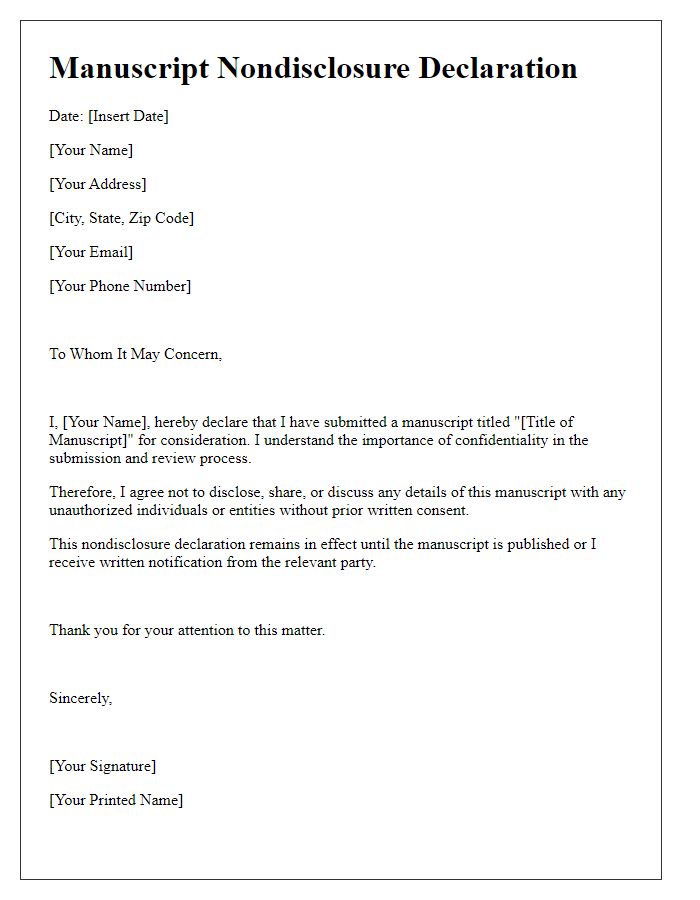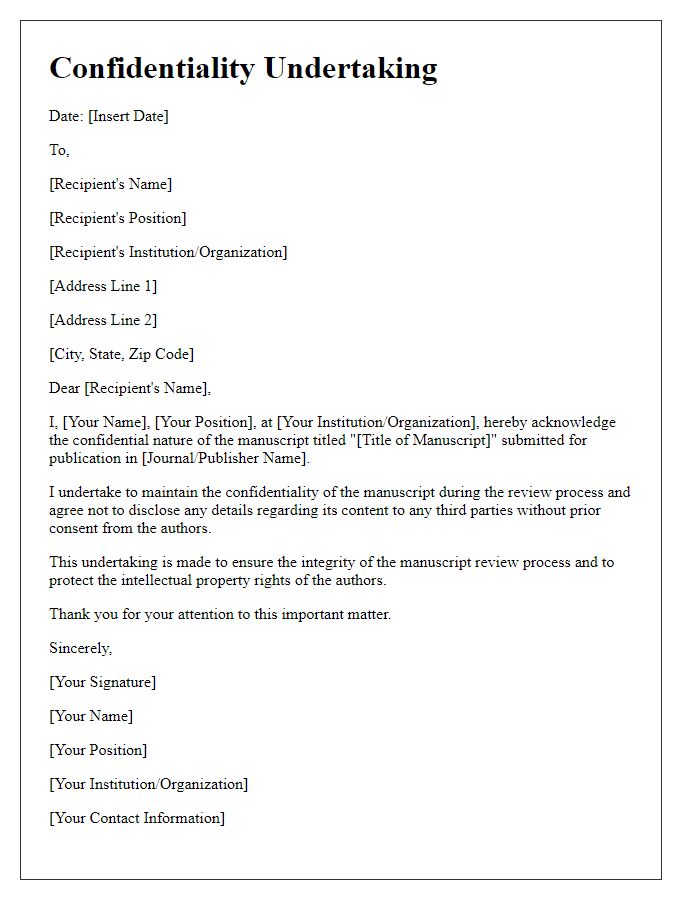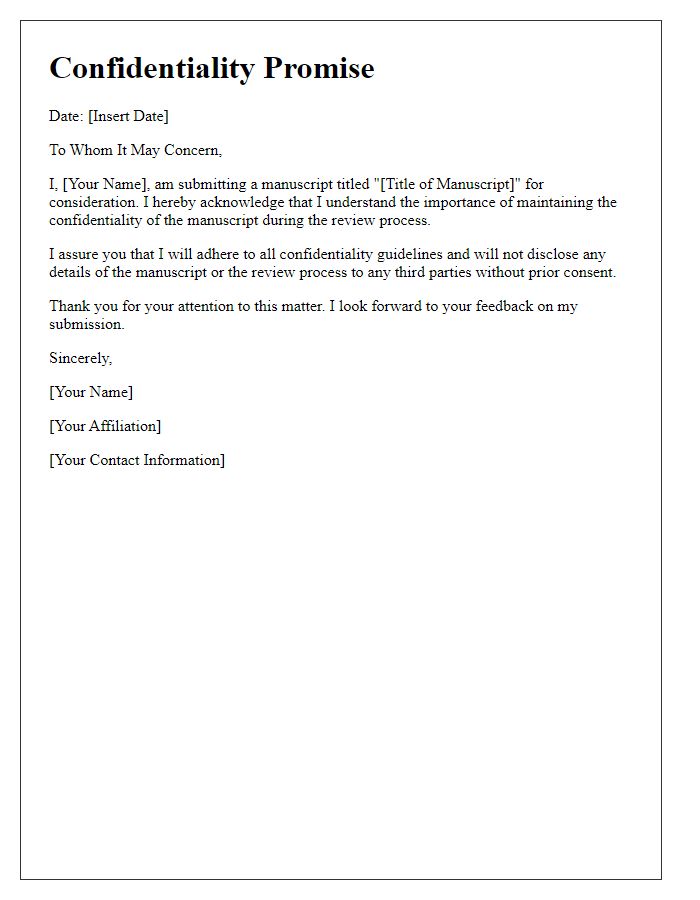When it comes to sharing your research, maintaining confidentiality is paramount. Whether you're submitting a manuscript to a journal or collaborating with peers, ensuring that your work is protected is essential for both your peace of mind and the integrity of your findings. In this article, we'll guide you through a letter template that effectively communicates your confidentiality assurances, helping you navigate the delicate landscape of academic publishing. So, let's dive in and discover how you can safeguard your intellectual property while fostering productive collaborations!

Purpose Statement
Manuscript confidentiality assurance ensures the protection of sensitive information during the peer review process in academic publishing. Authors from various disciplines, such as medical research or social sciences, submit their manuscripts to journals that uphold rigorous confidentiality standards. This process safeguards intellectual property, preserving authors' rights and preventing unauthorized access to unpublished data. Key elements include clear agreements, disclosure limitations, and the commitment of reviewers and editors to maintain confidentiality. Violations can result in reputational damage for the journal and authors, emphasizing the necessity of stringent protocols in manuscript handling.
Identification of Parties
Identification of parties involved in this manuscript confidentiality assurance includes the Author(s), Institution(s) represented, and Publisher. The Author(s), identified as [Author Name(s)], are responsible for the original content and intellectual property within the manuscript titled [Manuscript Title]. The Institution(s), represented by [Institution Name(s)], provide the academic and research framework supporting the work. The Publisher, identified as [Publisher Name], is responsible for the dissemination of the manuscript and adhering to confidentiality protocols throughout the review and publication process. This assurance ensures that proprietary information and unpublished data remain protected from unauthorized disclosure.
Scope of Confidential Information
Manuscript confidentiality is crucial for researchers and publishers in ensuring that sensitive information remains protected throughout the submission and review process. Confidential Information refers to unpublished data, methodologies, findings, and intellectual property related to the manuscript (designated as "Title of Manuscript") submitted to "Journal Name." This includes any detailed results or insights that have not been publicly disclosed, as well as associated documents, proposals, and correspondence. Such information must be safeguarded from unauthorized access or disclosure, protecting both the author's rights and the integrity of the peer review process. A breach of this confidentiality could jeopardize future research opportunities, collaborations, and the competitiveness of the innovation presented. Proper handling and secure storage of these materials are imperative to maintain ethical publishing standards in the academic community.
Non-Disclosure Obligations
Non-disclosure obligations are crucial in ensuring manuscript confidentiality during the publishing process. They establish binding legal agreements that protect sensitive information such as research findings and intellectual property from unauthorized access or dissemination. Typically, these obligations are stipulated in contracts between authors, publishers, and reviewers, detailing the responsibilities of each party concerning confidentiality. Breaches may lead to legal consequences, including financial penalties or loss of reputation within academic circles. Institutions such as universities and research organizations often provide guidelines and policies to uphold non-disclosure obligations, further emphasizing the significance of protecting collaborative work in environments like peer-reviewed journals or conferences.
Duration of Confidentiality
Confidentiality measures in the publication of manuscripts, particularly in academic and research settings, ensure the protection of intellectual property and sensitive information. Guidelines stipulate a standard duration of confidentiality, typically lasting from the initial submission date until the manuscript is either accepted for publication or rejected, with a common timeframe being six months to one year. During this period, data contained within the manuscript, including research methodologies, findings, and author affiliations, must remain undisclosed, preserving the integrity of the research process. Adherence to these confidentiality protocols is crucial for maintaining trust among authors, reviewers, and publishers, thereby fostering an environment conducive to innovation and collaboration within respective fields.













Comments